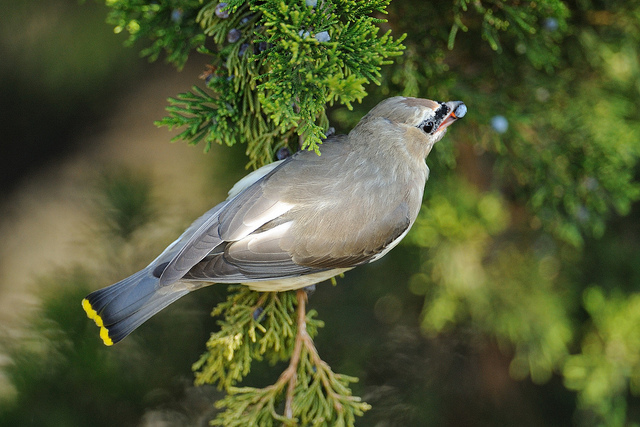Eastern Red Cedar : Positive Relationships in the Wild

Female Cedar Waxwing (Bombycilla cedrorum) on Eastern red cedar (Juniperus virginiana) – Independence Grove, IL (Flikr User JanetandPhil, 2011).
Despite these negative impacts in the Great Plains, Eastern red cedar does play an important role for wildlife throughout its range. Twigs and foliage are eaten by various organisms and are a staple in the diet of deer. The blue berry-like structures are an integral part of the diet of many birds and mammals, large and small, because they are high in crude fat, fiber, carbohydrate, and also contain calcium. For example, the Cedar waxwing’s name is derived from its appetite for cedar berries in the winter, during which time the conifer becomes a cornucopia of life-sustaining nourishment as most other food sources are unavailable.
Besides their significant value as a food source, these trees also provide important protection and cover for nesting. Cedar waxwings, sparrows, robins, warblers, and mocking birds are among those that rely on the cedars for nesting sanctuaries. In the symbiotic fashion of mutualism, birds are also invaluable to red cedars as the chief catalyst for seed dispersal.
